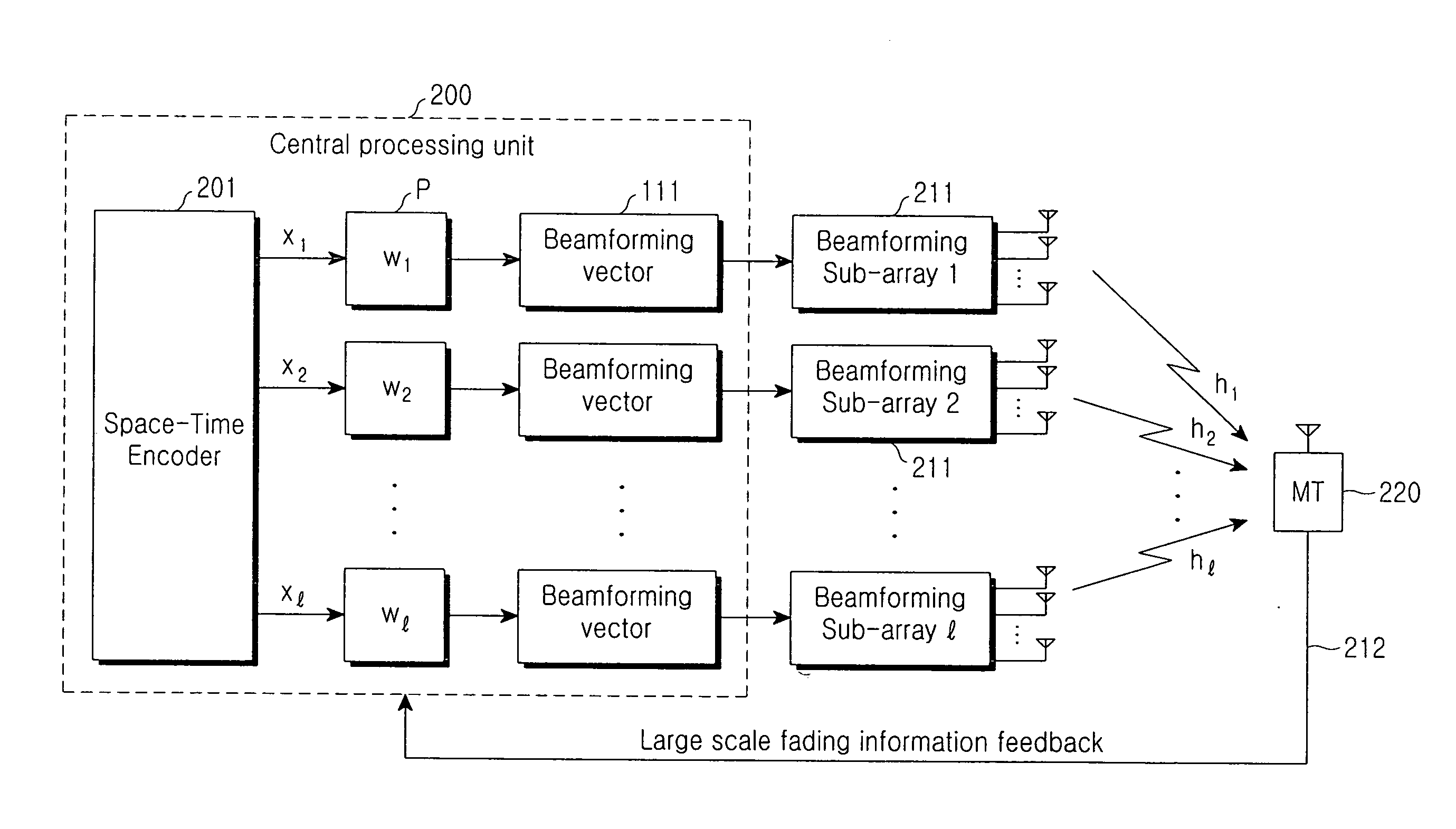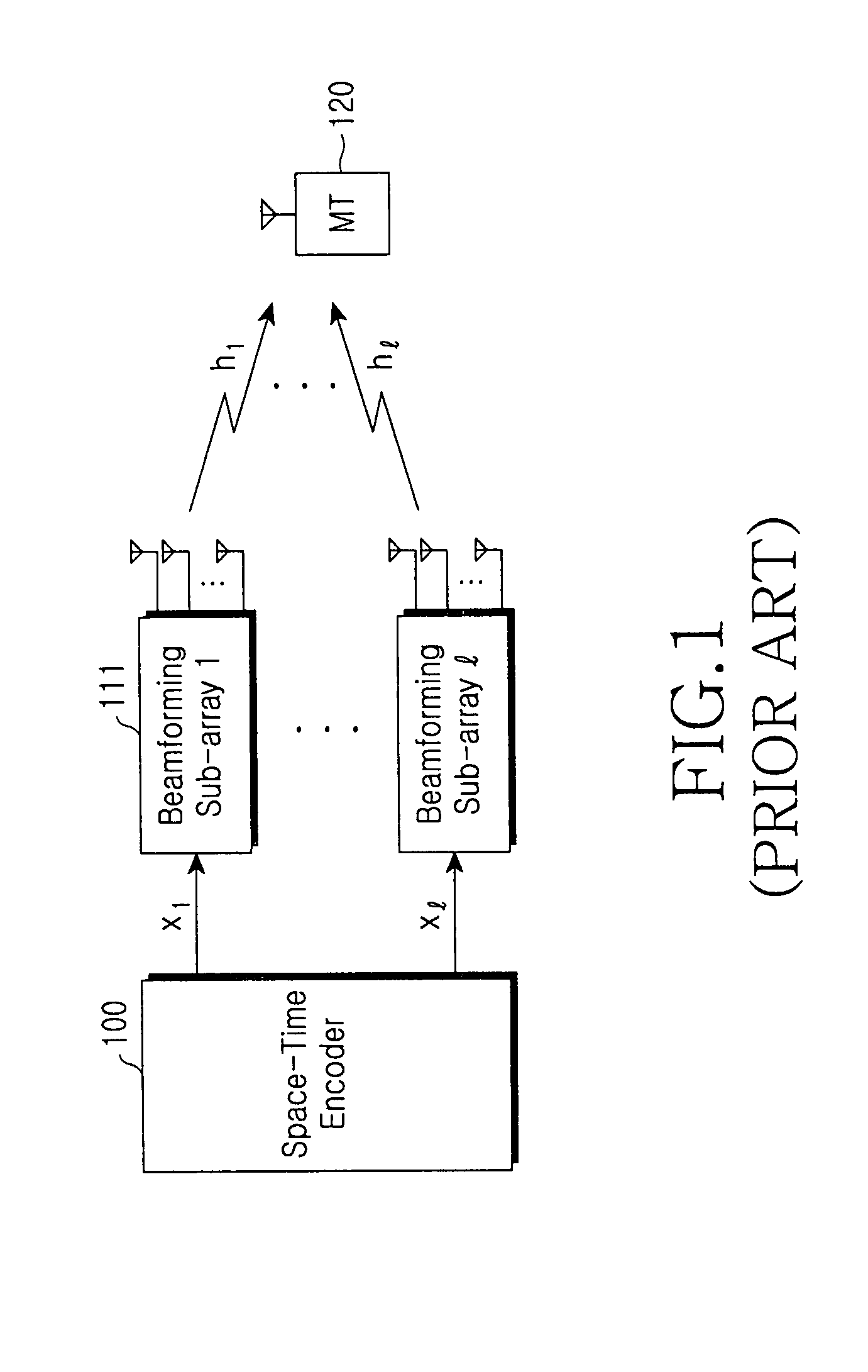Method and apparatus of adaptively allocating transmission power for beamforming combined with orthogonal space-time block codes based on symbol error rate in distributed wireless communication system
a distributed wireless communication system and symbol error rate technology, applied in the field of distributed, can solve the problems of uneconomical equal allocation of transmission power, unsatisfactory performance of equal allocation, and inability to achieve equal allocation, so as to achieve optimal performance and minimize the effect of symbol error ra
- Summary
- Abstract
- Description
- Claims
- Application Information
AI Technical Summary
Benefits of technology
Problems solved by technology
Method used
Image
Examples
Embodiment Construction
[0030]Hereinafter, one embodiment of the present invention is described with reference to the accompanying drawings. In the below description, many particular items such as a detailed component device are shown, but these are given only for providing the general understanding of the present invention, it will be understood by those skilled in the art that the present invention can be embodied without including these particular items.
[0031]The present invention provides a symbol-error-rate (SER)-based adaptive transmission power allocation scheme for beamforming combined with orthogonal space-time block coding (OSTBC) within a flat Nakagami fading channel in a distributed wireless communication system, based on large-scale fading information (pathloss and shadowing) fed back from a receiver to a transmitter and a Nakagami fading parameter.
[0032]According to the present invention, the transmitter estimates a direction-of-arrival (DOA) of a mobile terminal (MT) for a plurality of geogr...
PUM
 Login to View More
Login to View More Abstract
Description
Claims
Application Information
 Login to View More
Login to View More - R&D
- Intellectual Property
- Life Sciences
- Materials
- Tech Scout
- Unparalleled Data Quality
- Higher Quality Content
- 60% Fewer Hallucinations
Browse by: Latest US Patents, China's latest patents, Technical Efficacy Thesaurus, Application Domain, Technology Topic, Popular Technical Reports.
© 2025 PatSnap. All rights reserved.Legal|Privacy policy|Modern Slavery Act Transparency Statement|Sitemap|About US| Contact US: help@patsnap.com



